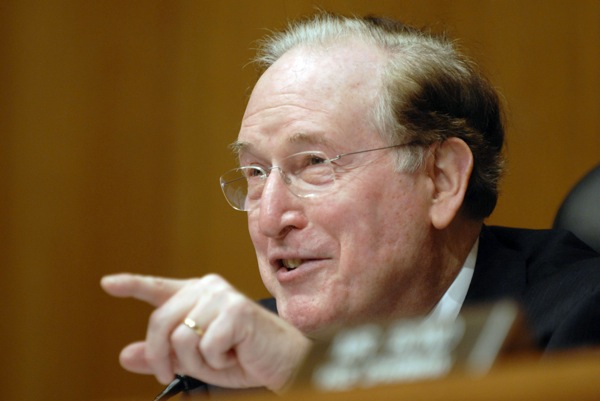CHIP Remains in Jeopardy, Despite Rockefeller Plan
About 10 million people receive health coverage under CHIP.
Jul 31, 2020610 Shares610K Views
Sen. Jay Rockefeller (D-W.Va.) (Photo by Mark Murrmann/ZUMA Press)
Appearing on the television earlier this week, Sen. Jay Rockefeller (D-W.Va.) boasted of the Senate’s efforts to keep alive the popular Children’s Health Insurance Program.
“That’s 14.1 million children who will continue to get health insurance which otherwise would be stopped,” Rockefeller toldMSNBC’s Andrea Mitchell on Wednesday.
Well, not quite.
[Congress1]Although the Senate’s health-reform bill does indeed reauthorize the CHIP program through 2019 — a provision that Rockefeller himself managed to passduring the Finance Committee deliberations — the proposal provides no money to fund that extension. Without the funding, kids enrolled in CHIP would be forced into private plans on the exchange — the same scenario proposed by the House health-reform bill, which repealsCHIP altogether in 2014. Behind Rockefeller, a number of lawmakers, advocates and health policy experts have warned that such a shift would reduce coverage for kids in the name of expanding it. And independent analysts have backed that claim, finding that the out-of-pocket costs would be much higher for exchange plans, thereby discouraging those low-income families from buying their kids any health insurance at all.
“Children are going to be paying more money for fewer benefits in the exchange than in CHIP,” warned Alison Buist, director of child health at the Children’s Defense Fund. “That much is clear.”
But unless upper-chamber leaders find a way to fund the CHIP extension, the Senate reauthorization will have all the practical effect of the House repeal.
Sen. Robert Casey (D-Pa.) has proposed a solution. The Casey amendment would require states to maintain current CHIP eligibility through 2013, hike the eligibility floor to 250 percent of poverty nationwide in 2014, and, perhaps most significantly, fund the program through 2019.
Three weeks into the Senate floor debate, however, the Casey amendment has received scant attention on and off Capitol Hill, and the Congressional Budget Office has yet to provide the Pennsylvania Democrat with a cost estimate.
“We continue to push them, but haven’t been able to get a verdict,” Casey spokesman Larry Smar said in an email Friday, echoing the frustration of child-health advocates who are wondering why the CHIP saga has been largely ignoredby the media throughout the debate. What happens now, Smar added, remains “unclear.”
Not that there hasn’t been a vocal effort to bring CHIP into the spotlight. Indeed, earlier this month, more than 600 organizations — groups as diverse as the National Parent Teacher Association, the NAACP and the Episcopal Church — wrote to Casey endorsing his amendment. “We must now seize this historic opportunity to build on the success of prior efforts and the bipartisan CHIP program,” the groups wrote, “and ensure that children will be better off, not worse off, as a result of health reform. Your amendment will do just that.”
Democrats are running out of time. Senate Majority Leader Harry Reid (D-Nev.), racing to pass the upper-chamber bill by Christmas, is expected Saturday to unveil his changes to the original legislation, along with cost estimates from the CBO. Advocates are wondering what elements of the Casey amendment, if any, will be included in the bill.
“Things are very much in flux,” Smar warned.
Aside from providing CHIP funding, the Casey provision would also require the Health and Human Services Department to compare the coverage and cost benefits of CHIP plans versus those on the exchange. A report on the agency’s findings would be due in 2016, several years after the exchange plans were up-and-running. By contrast, the House bill requires a similar study, but the 2012 due date arrives a full year beforethe exchange plans would be active. Casey is wondering how HHS is supposed to analyze plans that don’t yet exist.
“The exchange is going to be a very positive development for our health care system and for adults, but I would argue strongly and vigorously that it is not good for kids,” he said on the Senate floor last week. “We want to make sure as we debate that question that we have as much evidence to show that and put forth the reasons why the Children’s Health Insurance Program should not — should not– be part of the exchange.”
Supporters of the plan to move CHIP kids to the exchange — including some of the most vocal championsof CHIP in times past — argue that it will encourage coverage by allowing entire families to enroll under the same plan. “As effective as CHIP has been, families constantly must deal with long wait lists or block grants running out,” Rep. John Dingell (D-Mich.) said in an email last month. “Families in the Exchange or Medicaid will not have the same problems.”
Yet several independent analyses have questioned that move. One study, conducted by Watson Wyatt Worldwide, a financial consulting firm, found that most families living between 175 and 225 percent of poverty pay between 0 and 2 percent of health care costs under CHIP. Yet those same kids enrolled in subsidized exchange plans would pay between 5 percent and 35 percent of treatment costs, respectively — a shift “greatly increasing their financial burden and leaving low-income children worse off as a result of health reform,” the researchers noted. The Watson Wyatt study was commissioned by First Focus, a children’s health advocacy group.
Faced with such warnings, Casey and Rockefeller have vowed to take their fight to preserve CHIP all the way to the conference negotiations with House leaders. “Children deserve special status, special protections and the full attention of Congress,” Rockefeller wrotein an oped this week. “Anything less is a moral failure.”

Hajra Shannon
Reviewer
Latest Articles
Popular Articles
